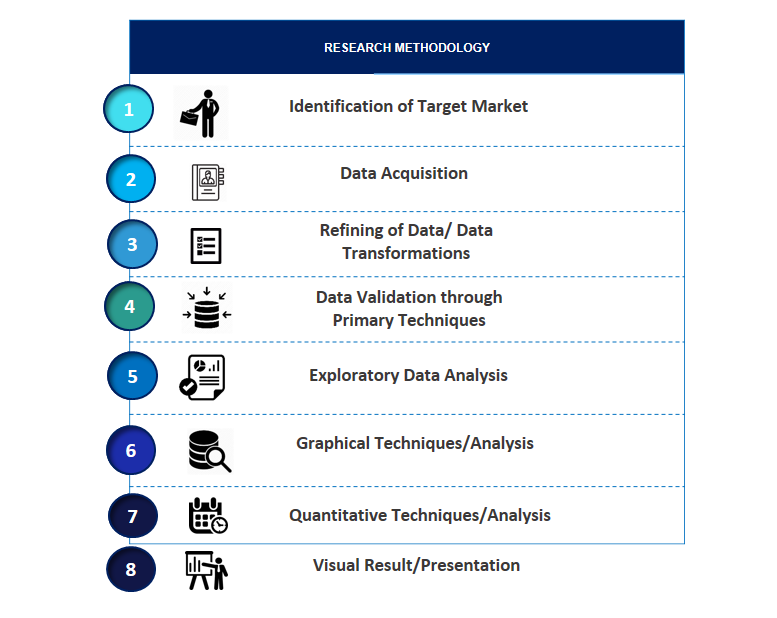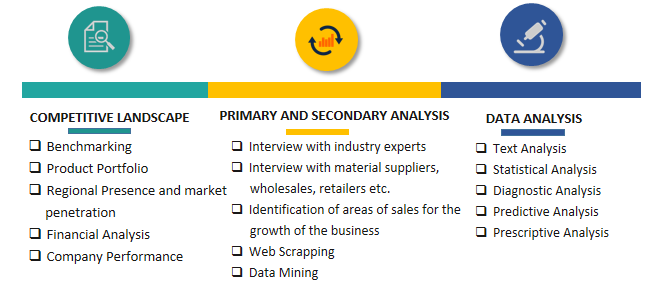Commercial Aircraft Aftermarket Parts Market Introduction and Overview
According to SPER Market Research, the Global Commercial Aircraft Aftermarket Parts Market is estimated to reach USD 73.74 Billion by 2033 with a CAGR of 6.1%.
The report includes an in-depth analysis of the Global Commercial Aircraft Aftermarket Parts Market, including market size and trends, product mix, applications, and supplier analysis. Commercial aircraft aftermarket parts are defined as the production, remanufacturing, distribution, retailing, and installation of all replacement parts, equipment, and accessories for commercial aircraft. However, these parts may or may not be manufactured by the original equipment manufacturer (OEM), and they can be generically classified as replacement parts (performance-oriented) or accessories (customization-oriented).
- May 2022: Boeing and Airline MRO Parts (AMP) inked a Tailored Parts Package (TPP) deal making Boeing a supplier to AMP's parts business and designating the former as a Platinum Supplier.
- February 2022: Chilean low-cost operator SKY struck an agreement with Airbus to acquire FHS-Components Flight Hour Services for its A320 fleet. The deal, which is part of Airbus' Flight Hour Services offering, will allow SKY to get daily monitoring and servicing of the airline's components from the manufacturer.
Market Opportunities and Challenges
The global commercial aircraft aftermarket parts industry offers numerous opportunities. The rapidly expanding aviation sector in emerging regions, particularly Asia Pacific, provides significant growth opportunities for aftermarket parts makers and suppliers. Aerospace technological breakthroughs, including as fuel-efficient engines and improved avionics, open the door to creative aftermarket solutions. Furthermore, establishing service contracts and strategic alliances with airlines and MRO facilities can increase market visibility and generate long-term revenue streams. These agreements provide extensive aftermarket support, positioning businesses for long-term success. Overall, capitalising on fleet expansions in new markets, embracing technological breakthroughs, and promoting collaborative ventures are critical methods for capitalising on prospects in the thriving commercial aviation aftermarket parts business.
The global commercial aircraft aftermarket parts market faces a number of issues. High prices associated with aftermarket parts, particularly for complex systems, provide a challenge for airlines and MRO facilities operating on tight budgets. Furthermore, the abundance of counterfeit parts on the market poses significant threats to aircraft safety and reliability, emphasising the significance of rigorous quality control and regulatory monitoring. Furthermore, handling large stockpiles of aftermarket parts complicates matters. Airlines and MRO facilities must strike a delicate balance between ensuring the availability of the right parts and reducing inventory carrying costs. To address these issues, the commercial aviation aftermarket parts sector must employ innovative cost management strategies, robust quality assurance procedures, and effective inventory management systems.
Market Competitive Landscape
The commercial aviation aftermarket parts market is fragmented due to the large number of players offering various types of parts and components. The consolidation of the market through the acquisition of local suppliers and makers of parts and components by big OEM suppliers is likely to strengthen the competitive competition. Furthermore, focusing on business expansion through new initiatives, increased investments, R&D, and the creation of customised packages to meet the changing needs of customers is projected to assist active companies acquire market share throughout the projection period. The major key players in the Global Commercial Aircraft Aftermarket Parts Market are: A J Walter Aviation Limited, Aventure International Aviation Services, Bombardier Inc., Collins Aerospace (Raytheon Technologies Corporation), General Electric Company, GKN Aerospace (Melrose Industries), Honeywell International Inc., Meggitt PLC, Moog Inc., Parker-Hannifin Corporation, The Boeing Company, Others.
Scope of the Report:
| Report Metric | Details |
| Market size available for years | 2020-2033 |
| Base year considered | 2023 |
| Forecast period | 2024-2033 |
| Segments covered | By Aircraft Type, By Component Type, By Parts
|
| Regions covered | Asia-Pacific, Europe, Middle East and Africa, North America, Latin America
|
| Companies Covered | A J Walter Aviation Limited, Aventure International Aviation Services, Bombardier Inc., Collins Aerospace (Raytheon Technologies Corporation), General Electric Company, GKN Aerospace (Melrose Industries), Honeywell International Inc., Meggitt PLC, Moog Inc., Parker-Hannifin Corporation, The Boeing Company, Others
|
COVID-19 Impact on Global Commercial Aircraft Aftermarket Parts Market
Due to the COVID-19 epidemic, numerous airlines were obliged to retire their aircraft sooner to cut operational costs. This increased the availability of rotatable and used serviceable material (USM) parts in inventory, which were re-introduced into the market supply chain via parts manufacturer approval (PMA) holders and unified-management-system USM providers. Furthermore, the COVID-19 pandemic prompted airlines to realign their active fleets in response to demand, resulting in increased demand for narrow-body aircraft on domestic routes and, as a result, driving demand for narrow-body aircraft aftermarket parts during the forecast period.
Key Target Audience
- Airlines
- Aircraft Maintenance, Repair, and Overhaul (MRO) Providers
- Aircraft OEMs (Original Equipment Manufacturers)
- Aircraft Component Manufacturers
- Distributors and Suppliers
- Aviation Authorities and Regulatory Bodies
- Leasing Companies
- Investors and Financial Institutions
- Aviation Insurance Companies
- Others
Our in-depth analysis of the Commercial Aircraft Aftermarket Parts Market includes the following segments:
|
By Aircraft Type:
|
Narrow-body
Regional Jet
Wide-body
|
|
By Component Type:
|
Airframe
Engine
Interior
Other Component Types
|
|
By Parts:
|
MRO Parts
Rotable Replacement Parts
|
|
By Region:
|
Asia-Pacific
Europe
Middle East & Africa
North America
Latin America
|
Key Topics Covered in the Report
- Global Commercial Aircraft Aftermarket Parts Market Size (FY’2024-FY’2033)
- Overview of Global Commercial Aircraft Aftermarket Parts Market
- Segmentation of Global Commercial Aircraft Aftermarket Parts Market By Aircraft Type (Narrow-body, Regional Jet, Wide-body)
- Segmentation of Global Commercial Aircraft Aftermarket Parts Market By Component Type (Airframe, Engine, Interior, Other Component Types)
- Segmentation of Global Commercial Aircraft Aftermarket Parts Market By Parts (MRO Parts, Rotable Replacement Parts)
- Statistical Snap of Global Commercial Aircraft Aftermarket Parts Market
- Expansion Analysis of Global Commercial Aircraft Aftermarket Parts Market
- Problems and Obstacles in Global Commercial Aircraft Aftermarket Parts Market
- Competitive Landscape in the Global Commercial Aircraft Aftermarket Parts Market
- Impact of COVID-19 and Demonetization on Global Commercial Aircraft Aftermarket Parts Market
- Details on Current Investment in Global Commercial Aircraft Aftermarket Parts Market
- Competitive Analysis of Global Commercial Aircraft Aftermarket Parts Market
- Prominent Players in the Global Commercial Aircraft Aftermarket Parts Market
- SWOT Analysis of Global Commercial Aircraft Aftermarket Parts Market
- Global Commercial Aircraft Aftermarket Parts Market Future Outlook and Projections (FY’2024-FY’2033)
- Recommendations from Analyst
1. Introduction
1.1. Scope of the report
1.2. Market segment analysis
2. Research Methodology
2.1. Research data source
2.1.1. Secondary Data
2.1.2. Primary Data
2.1.3. SPER’s internal database
2.1.4. Premium insight from KOL’s
2.2. Market size estimation
2.2.1. Top-down and Bottom-up approach
2.3. Data triangulation
3. Executive Summary
4. Market Dynamics
4.1. Driver, Restraint, Opportunity and Challenges analysis
4.1.1. Drivers
4.1.2. Restraints
4.1.3. Opportunities
4.1.4. Challenges
4.2. COVID-19 Impacts of the Global Commercial Aircraft Aftermarket Parts Market
5. Market variable and outlook
5.1. SWOT Analysis
5.1.1. Strengths
5.1.2. Weaknesses
5.1.3. Opportunities
5.1.4. Threats
5.2. PESTEL Analysis
5.2.1. Political Landscape
5.2.2. Economic Landscape
5.2.3. Social Landscape
5.2.4. Technological Landscape
5.2.5. Environmental Landscape
5.2.6. Legal Landscape
5.3. PORTER’s Five Forces
5.3.1. Bargaining power of suppliers
5.3.2. Bargaining power of buyers
5.3.3. Threat of Substitute
5.3.4. Threat of new entrant
5.3.5. Competitive rivalry
5.4. Heat Map Analysis
6. Competitive Landscape
6.1. Global Commercial Aircraft Aftermarket Parts Market Manufacturing Base Distribution, Sales Area, Product Type
6.2. Mergers & Acquisitions, Partnerships, Product Launch, and Collaboration in Global Commercial Aircraft Aftermarket Parts Market
7. Global Commercial Aircraft Aftermarket Parts Market, By Aircraft Type (USD Million)
7.1. Global Commercial Aircraft Aftermarket Parts Market Value Share and Forecast, By Aircraft Type, 2024-2033
7.2. Narrow-body
7.3. Regional Jet
7.4. Wide-body
8. Global Commercial Aircraft Aftermarket Parts Market, By Component Type (USD Million)
8.1. Global Commercial Aircraft Aftermarket Parts Market Value Share and Forecast, By Component Type, 2024-2033
8.2. Airframe
8.3. Engine
8.4. Interior
8.5. Other Component Types
9. Global Commercial Aircraft Aftermarket Parts Market, By Parts (USD Million)
9.1. Global Commercial Aircraft Aftermarket Parts Market Value Share and Forecast, By Parts, 2024-2033
9.2. MRO Parts
9.3. Rotable Replacement Parts
10. Global Commercial Aircraft Aftermarket Parts Market Forecast, 2020-2033 (USD Million)
10.1. Global Commercial Aircraft Aftermarket Parts Market Size and Market Share
11. Global Commercial Aircraft Aftermarket Parts Market, By Aircraft Type, 2020-2033 (USD Million)
11.1. Global Commercial Aircraft Aftermarket Parts Market Size and Market Share By Aircraft Type (2020-2026)
11.2. Global Commercial Aircraft Aftermarket Parts Market Size and Market Share By Aircraft Type (2027-2033)
12. Global Commercial Aircraft Aftermarket Parts Market, By Component Type, 2020-2033 (USD Million)
12.1. Global Commercial Aircraft Aftermarket Parts Market Size and Market Share By Component Type (2020-2026)
12.2. Global Commercial Aircraft Aftermarket Parts Market Size and Market Share By Component Type (2027-2033)
13. Global Commercial Aircraft Aftermarket Parts Market, By Parts, 2020-2033 (USD Million)
13.1. Global Commercial Aircraft Aftermarket Parts Market Size and Market Share By Parts (2020-2026)
13.2. Global Commercial Aircraft Aftermarket Parts Market Size and Market Share By Parts (2027-2033)
14. Global Commercial Aircraft Aftermarket Parts Market, By Region, 2020-2033 (USD Million)
14.1. Global Commercial Aircraft Aftermarket Parts Market Size and Market Share By Region (2020-2026)
14.2. Global Commercial Aircraft Aftermarket Parts Market Size and Market Share By Region (2027-2033)
14.3. Asia-Pacific
14.3.1. Australia
14.3.2. China
14.3.3. India
14.3.4. Japan
14.3.5. South Korea
14.3.6. Rest of Asia-Pacific
14.4. Europe
14.4.1. France
14.4.2. Germany
14.4.3. Italy
14.4.4. Spain
14.4.5. United Kingdom
14.4.6. Rest of Europe
14.5. Middle East and Africa
14.5.1. Kingdom of Saudi Arabia
14.5.2. United Arab Emirates
14.5.3. Rest of Middle East & Africa
14.6. North America
14.6.1. Canada
14.6.2. Mexico
14.6.3. United States
14.7. Latin America
14.7.1. Argentina
14.7.2. Brazil
14.7.3. Rest of Latin America
15. Company Profile
15.1. A J Walter Aviation Limited
15.1.1. Company details
15.1.2. Financial outlook
15.1.3. Product summary
15.1.4. Recent developments
15.2. Aventure International Aviation Services
15.2.1. Company details
15.2.2. Financial outlook
15.2.3. Product summary
15.2.4. Recent developments
15.3. Bombardier Inc
15.3.1. Company details
15.3.2. Financial outlook
15.3.3. Product summary
15.3.4. Recent developments
15.4. Collins Aerospace (Raytheon Technologies Corporation)
15.4.1. Company details
15.4.2. Financial outlook
15.4.3. Product summary
15.4.4. Recent developments
15.5. General Electric Company
15.5.1. Company details
15.5.2. Financial outlook
15.5.3. Product summary
15.5.4. Recent developments
15.6. GKN Aerospace (Melrose Industries)
15.6.1. Company details
15.6.2. Financial outlook
15.6.3. Product summary
15.6.4. Recent developments
15.7. Honeywell International Inc
15.7.1. Company details
15.7.2. Financial outlook
15.7.3. Product summary
15.7.4. Recent developments
15.8. Meggitt PLC
15.8.1. Company details
15.8.2. Financial outlook
15.8.3. Product summary
15.8.4. Recent developments
15.9. Moog Inc
15.9.1. Company details
15.9.2. Financial outlook
15.9.3. Product summary
15.9.4. Recent developments
15.10. Parker-Hannifin Corporation
15.10.1. Company details
15.10.2. Financial outlook
15.10.3. Product summary
15.10.4. Recent developments
15.11. The Boeing Company
15.11.1. Company details
15.11.2. Financial outlook
15.11.3. Product summary
15.11.4. Recent developments
15.12. Others
16. List of Abbreviations
17. Reference Links
18. Conclusion
19. Research Scope
SPER Market Research’s methodology uses great emphasis on primary research to ensure that the market intelligence insights are up to date, reliable and accurate. Primary interviews are done with players involved in each phase of a supply chain to analyze the market forecasting. The secondary research method is used to help you fully understand how the future markets and the spending patterns look likes.
The report is based on in-depth qualitative and quantitative analysis of the Product Market. The quantitative analysis involves the application of various projection and sampling techniques. The qualitative analysis involves primary interviews, surveys, and vendor briefings. The data gathered as a result of these processes are validated through experts opinion. Our research methodology entails an ideal mixture of primary and secondary initiatives.


